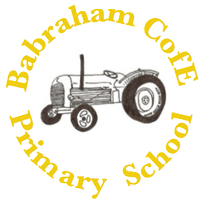
Welcome to Our Maths Page!
The ability to perform basic mathematical calculations and solve problems with numbers is an essential skill. Life constantly brings about the need to understand mathematical concepts and apply competences that have been developed throughout school and in later years.
Children need to learn simple mathematical concepts early in their educational journey and build on these each year in order to leave Primary School with the confidence to apply their knowledge and have success in mathematics at Secondary School. We teach the full content of the National Curriculum through the Complete Maths Scheme.
From the very beginnings in Reception, children build on from the basics and scaffold their mathematical abilities, year on year. A wide variety of methods are used across the school including: hand-on modelling with the use of manipulatives, audio-visual kinaesthetic tools, computer based activities and a wide range of worksheets and textbooks. The use of computers and online mathematical apps has become much more widespread and the Complete Maths Scheme utilises various learning videos, quizzes, tutorials and tests.
The focus in Reception is on comparing, grouping, learning about number through rhymes, comparing sizes, understanding number through experience and solving problems within the value of three. Eventually this leads to counting beyond 10, comparing length and volume and identifying some number bonds that make 10.
During Years 1 and 2, more detailed teaching and learning takes place and written mathematics truly starts. Progress is made with bigger numbers and wider contexts - counting beyond 100, basics of money and time, addition and subtraction, division by grouping, counting in steps of 2,3 and 5, and beginning to learn 2, 5 and 10 times tables.
In Years 3 and 4, pupils work with numbers in the thousands, understanding place value and calculating addition and subtraction with up to 3 digits. They start to look at and add/subtract simple fractions - for example half, third and quarter - expand times tables to include 3, 4 and 8, and even find out about Roman numerals. Further learning about area, perimeter, length, volume and converting measures takes place. Pupils have opportunities to find out about data, statistics, graphs and charts.
In Years 5 and 6, pupils move on to experience much larger numbers - up to 10 million, calculate addition and subtraction with thousands, perform long multiplication and division, and learn about order of operations and the basics of algebra. They calculate fractions, decimals, percentages and ratios of amounts, and use the equivalence of these to solve problems. They find out about position, direction, translation, rotation and reflection of points and coordinates. A wider understanding of statistics is experiences including mean, mode, median and range and the use of these for comparison.
